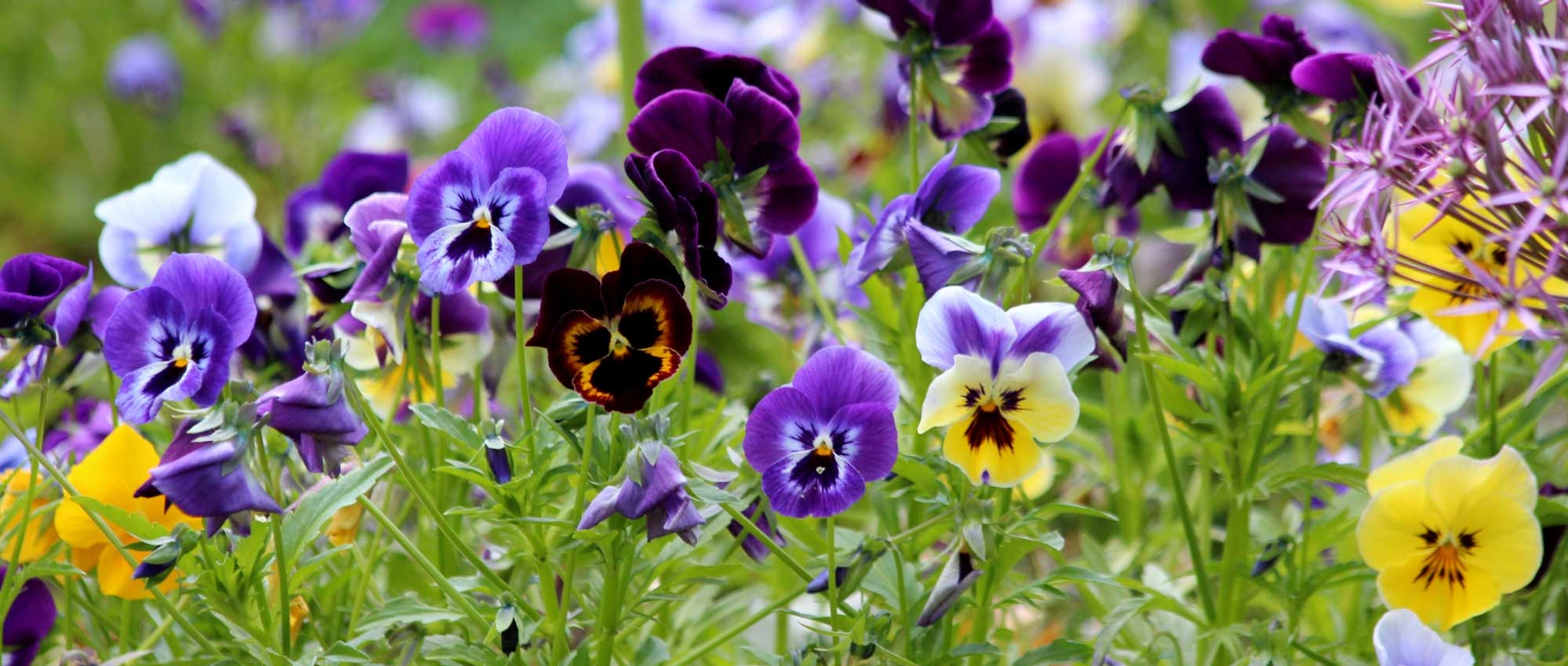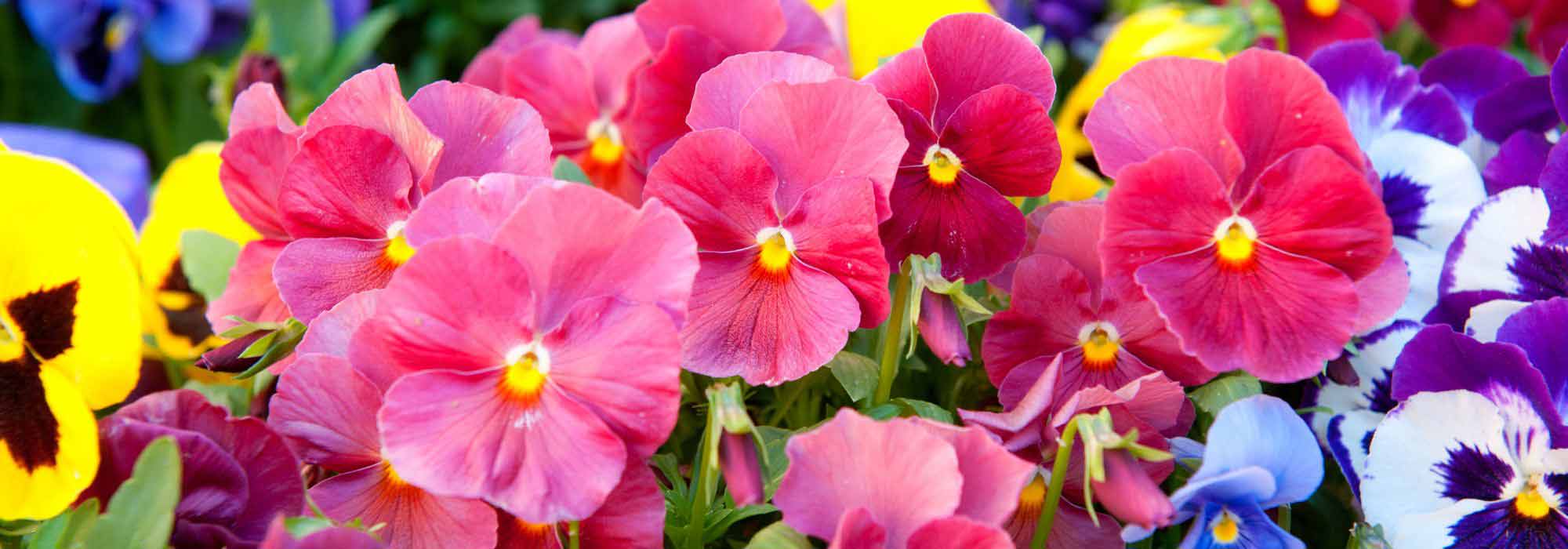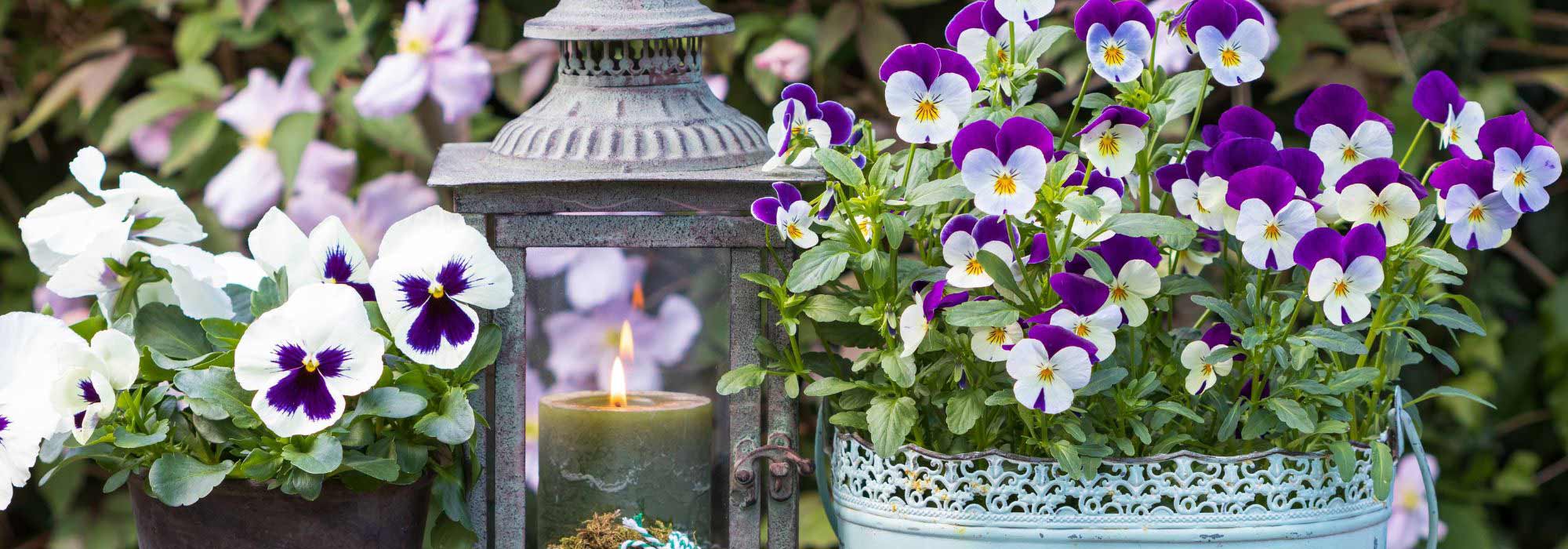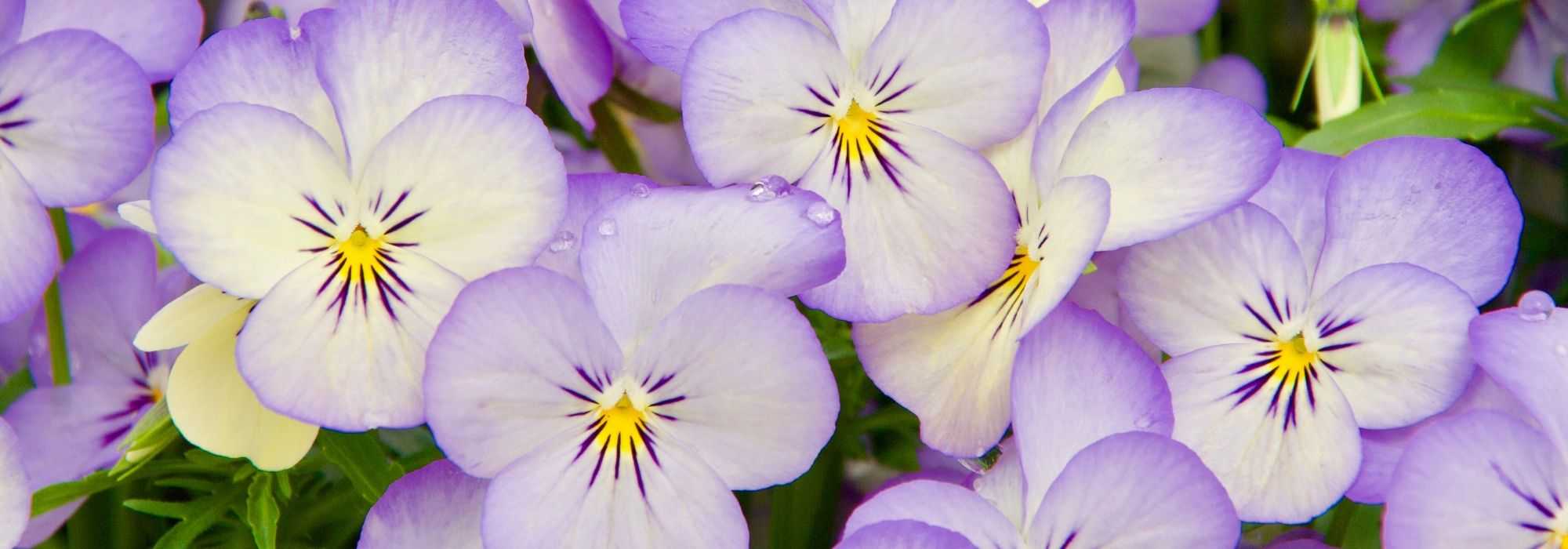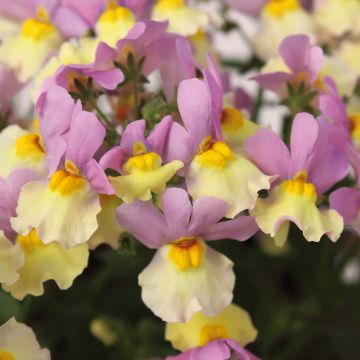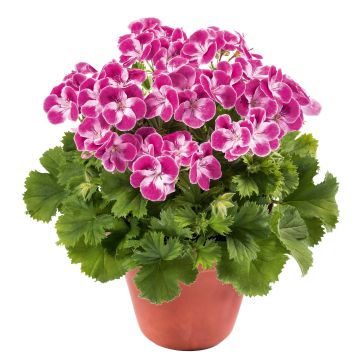

Viola cornuta F1 Kitty Surprise - Horned Pansy


Viola cornuta F1 Kitty Surprise - Horned Pansy
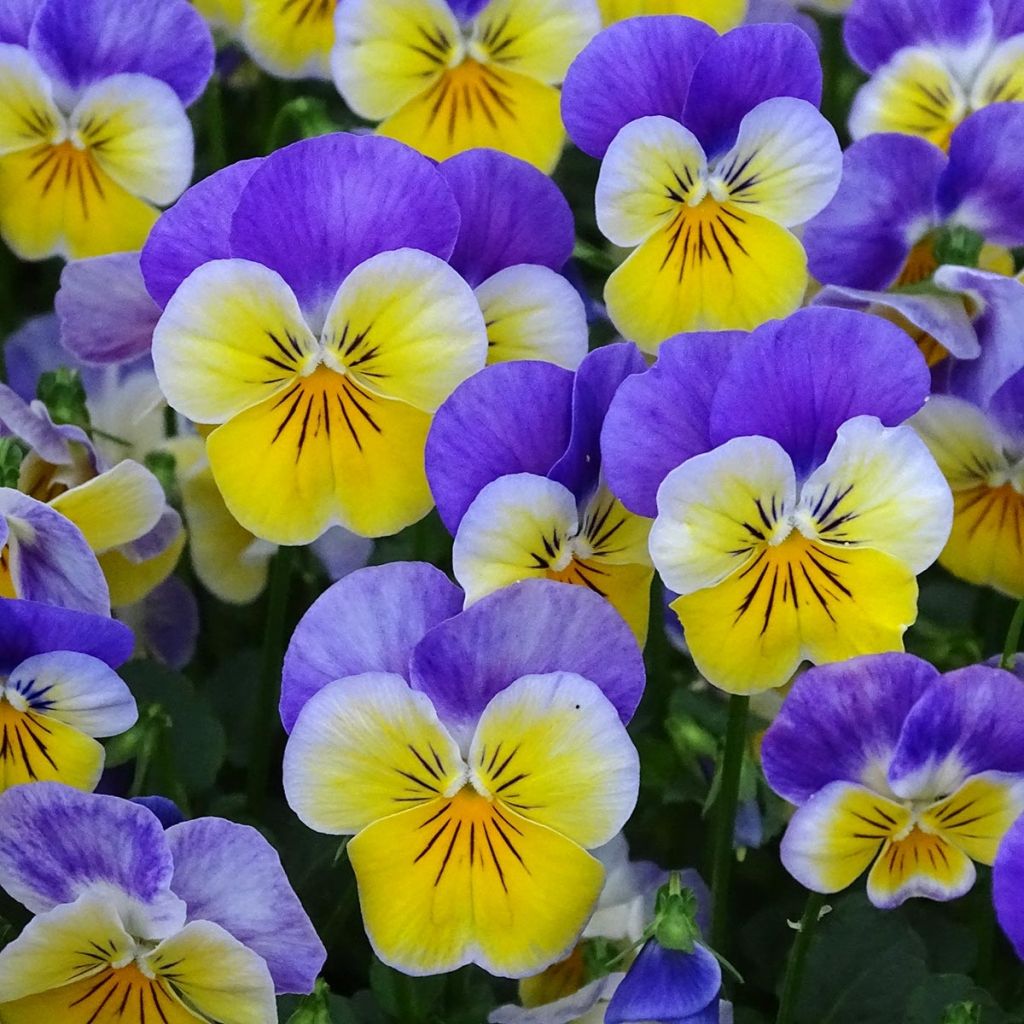

Viola cornuta F1 Kitty Surprise - Horned Pansy
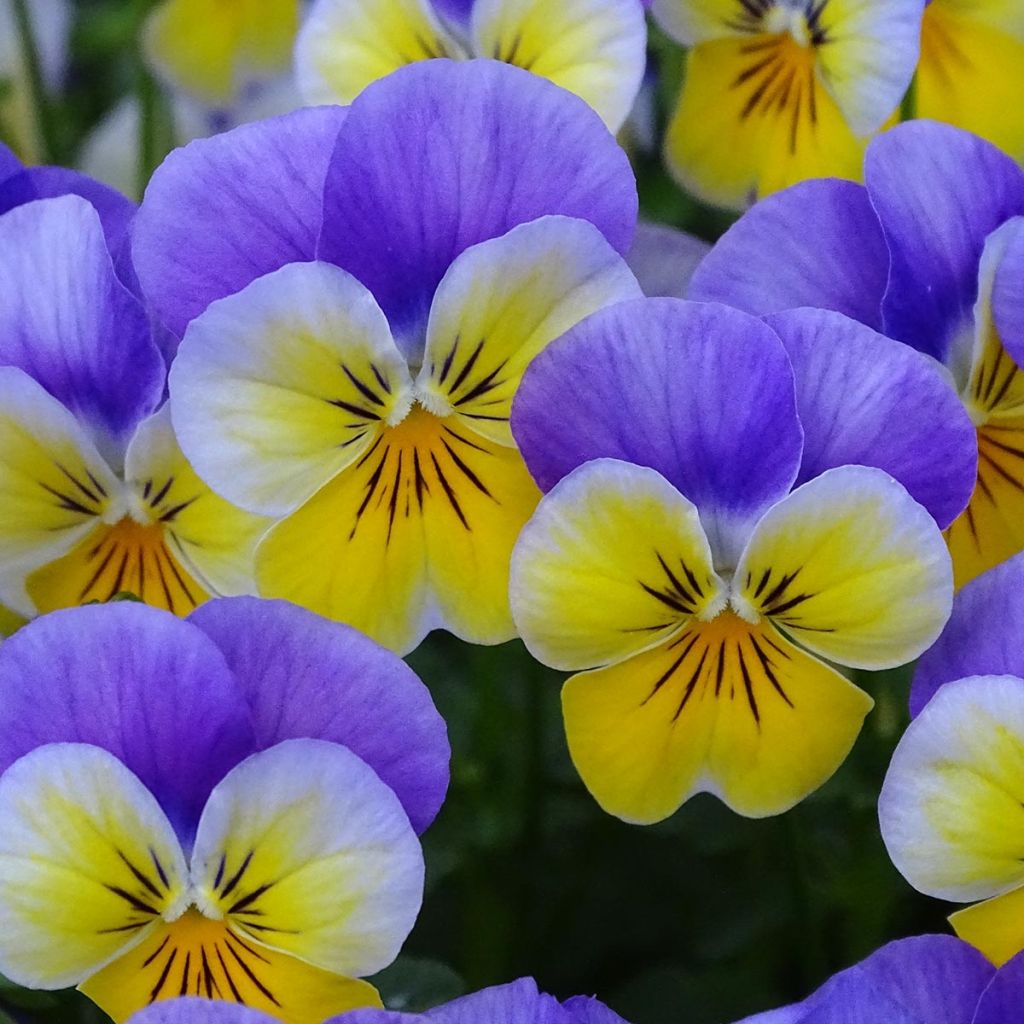

Viola cornuta F1 Kitty Surprise - Horned Pansy


Viola cornuta F1 Kitty Surprise - Horned Pansy
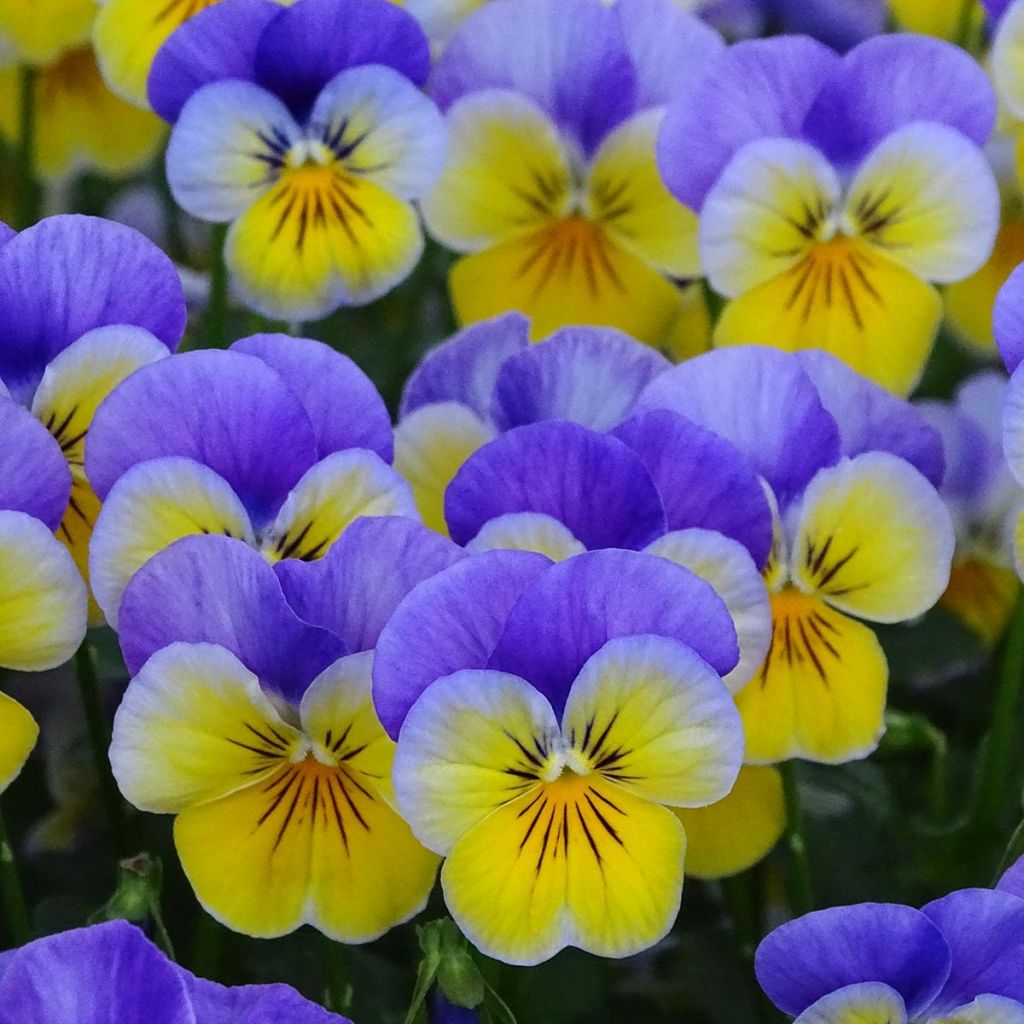

Viola cornuta F1 Kitty Surprise - Horned Pansy


Viola cornuta F1 Kitty Surprise - Horned Pansy
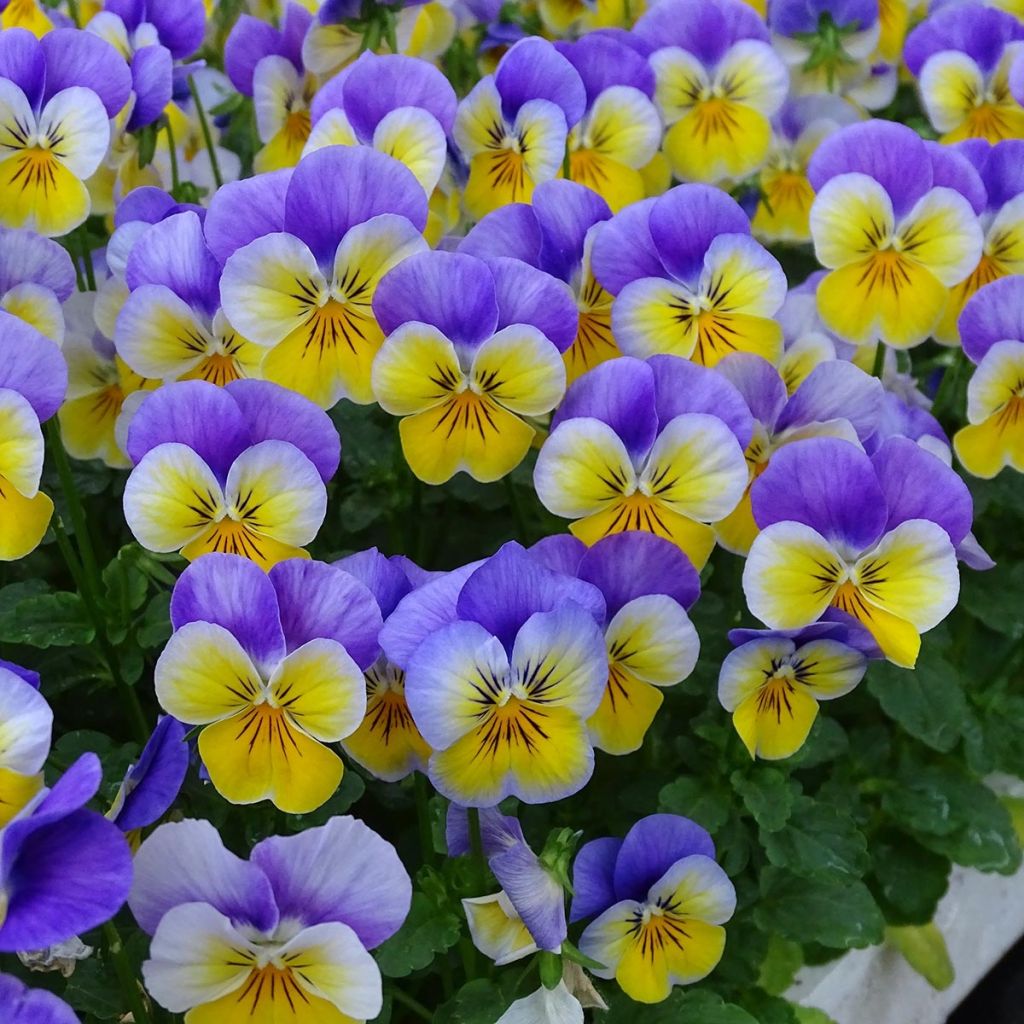

Viola cornuta F1 Kitty Surprise - Horned Pansy
Viola cornuta F1 Kitty Surprise - Horned Pansy
Viola x cornuta F1 Kitty Surprise
Horned Pansy, Horned Violet
Delighted with my young plants, they will be potted up tomorrow before being planted in planters.
Monique, 25/09/2022
Special offer!
Receive a €20 voucher for any order over €90 (excluding delivery costs, credit notes, and plastic-free options)!
1- Add your favorite plants to your cart.
2- Once you have reached €90, confirm your order (you can even choose the delivery date!).
3- As soon as your order is shipped, you will receive an email containing your voucher code, valid for 3 months (90 days).
Your voucher is unique and can only be used once, for any order with a minimum value of €20, excluding delivery costs.
Can be combined with other current offers, non-divisible and non-refundable.
Why not try an alternative variety in stock?
View all →This plant carries a 6 months recovery warranty
More information
We guarantee the quality of our plants for a full growing cycle, and will replace at our expense any plant that fails to recover under normal climatic and planting conditions.
Would this plant suit my garden?
Set up your Plantfit profile →
Description
The Viola cornuta 'F1 Kitty Surprise', a hybrid variety of horned violet, produces plants in small compact clumps covered with an abundance of flowers in innocent and pure colors. The petals are lemon yellow, white or violet, with small black moustaches. This robust and branching variety is easy to grow and blooms for a very long period. A very cheerful touch in borders, or on the balcony or terrace.
Belonging to the violet family, the horned violet grows spontaneously in the Pyrenees and is a low perennial plant that has given rise to numerous hybrids and cultivars. Often crossed with Viola tricolor, their most famous descendants are garden pansies. The 'F1 Kitty Surprise' variety is a herbaceous ground-covering plant that reaches a height of 15 cm (5.9 in) when in bloom, with dark green, ovate, and serrated evergreen leaves, forming a spreading tuft with a sprawling habit. This plant is covered with flowers from spring to autumn. Its compound flowers of 5 petals resemble those of small pansies, but the petals are arranged differently. The two upper petals are large, upright, of a beautiful velvety light violet, the other three are inclined downwards, white in color, and the central petal shows a small, very bright lemon yellow macule, with a violet spot centered towards the edge. The plant spreads quite rapidly thanks to its rhizomes and also self-seeds very easily in the garden, not always faithfully.
Horned violets are intended as bedding plants for low borders, but also for pots and hanging baskets, where they can be associated with other spring and summer flowering plants (Forget-me-nots, Dwarf Daffodils, Daisies, Primroses, Botanical Tulips, summer and autumn asters). The flowers of horned violets are edible, so do not hesitate to decorate your plates with a few or even add to salads for a touch of color.
Please note that our young plants in mini-plugs are professional products intended for experienced gardeners. Upon receipt, transplant as soon as possible into containers, or directly into flower beds.
Viola cornuta F1 Kitty Surprise - Horned Pansy in pictures
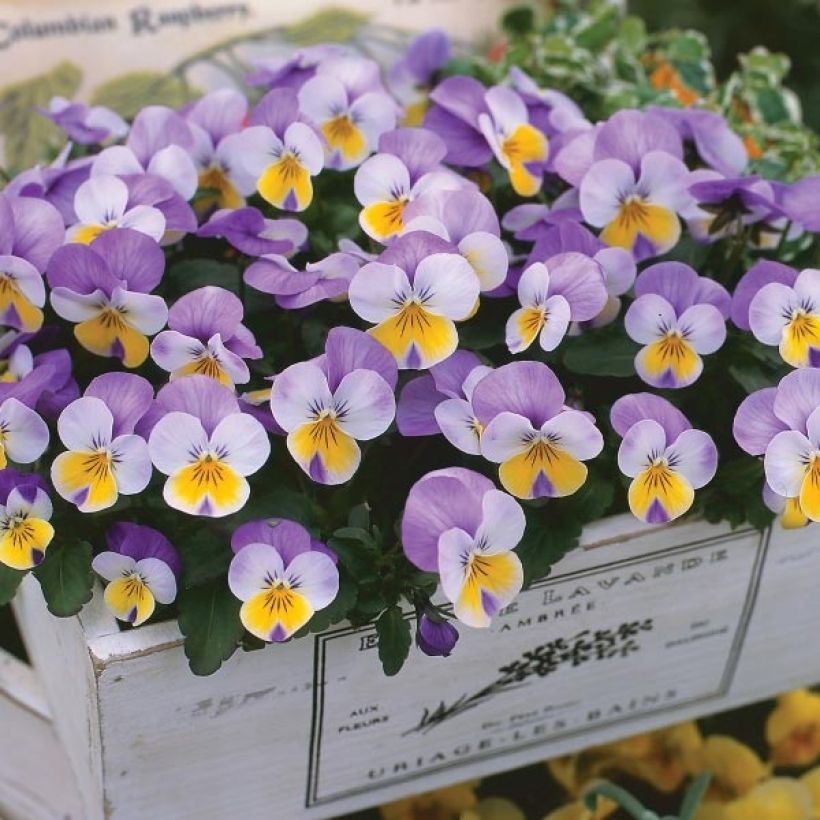

Flowering
Foliage
Plant habit
Botanical data
Viola
x cornuta
F1 Kitty Surprise
Violaceae
Horned Pansy, Horned Violet
Cultivar or hybrid
Other Pansies and violas
View all →Planting and care
Horned violets appreciate a light, humus-rich soil that is moist but well-drained as they are sensitive to excessive moisture in winter. In heavy soil, add some sand to improve drainage.
Plant horned violets in a sunny location but not in direct sunlight, or under light shade.
Very floriferous and fast-growing, they are greedy plants. Feed them with liquid fertiliser for containers once or twice a week during the growing season. Water regularly but not excessively. Remove faded flowers to promote new flowering.
Planting period
Intended location
Care
Planting & care advice
-
, onOrder confirmed
Reply from on Promesse de fleurs
Similar products
Haven't found what you were looking for?
Hardiness is the lowest winter temperature a plant can endure without suffering serious damage or even dying. However, hardiness is affected by location (a sheltered area, such as a patio), protection (winter cover) and soil type (hardiness is improved by well-drained soil).

Photo Sharing Terms & Conditions
In order to encourage gardeners to interact and share their experiences, Promesse de fleurs offers various media enabling content to be uploaded onto its Site - in particular via the ‘Photo sharing’ module.
The User agrees to refrain from:
- Posting any content that is illegal, prejudicial, insulting, racist, inciteful to hatred, revisionist, contrary to public decency, that infringes on privacy or on the privacy rights of third parties, in particular the publicity rights of persons and goods, intellectual property rights, or the right to privacy.
- Submitting content on behalf of a third party;
- Impersonate the identity of a third party and/or publish any personal information about a third party;
In general, the User undertakes to refrain from any unethical behaviour.
All Content (in particular text, comments, files, images, photos, videos, creative works, etc.), which may be subject to property or intellectual property rights, image or other private rights, shall remain the property of the User, subject to the limited rights granted by the terms of the licence granted by Promesse de fleurs as stated below. Users are at liberty to publish or not to publish such Content on the Site, notably via the ‘Photo Sharing’ facility, and accept that this Content shall be made public and freely accessible, notably on the Internet.
Users further acknowledge, undertake to have ,and guarantee that they hold all necessary rights and permissions to publish such material on the Site, in particular with regard to the legislation in force pertaining to any privacy, property, intellectual property, image, or contractual rights, or rights of any other nature. By publishing such Content on the Site, Users acknowledge accepting full liability as publishers of the Content within the meaning of the law, and grant Promesse de fleurs, free of charge, an inclusive, worldwide licence for the said Content for the entire duration of its publication, including all reproduction, representation, up/downloading, displaying, performing, transmission, and storage rights.
Users also grant permission for their name to be linked to the Content and accept that this link may not always be made available.
By engaging in posting material, Users consent to their Content becoming automatically accessible on the Internet, in particular on other sites and/or blogs and/or web pages of the Promesse de fleurs site, including in particular social pages and the Promesse de fleurs catalogue.
Users may secure the removal of entrusted content free of charge by issuing a simple request via our contact form.
The flowering period indicated on our website applies to countries and regions located in USDA zone 8 (France, the United Kingdom, Ireland, the Netherlands, etc.)
It will vary according to where you live:
- In zones 9 to 10 (Italy, Spain, Greece, etc.), flowering will occur about 2 to 4 weeks earlier.
- In zones 6 to 7 (Germany, Poland, Slovenia, and lower mountainous regions), flowering will be delayed by 2 to 3 weeks.
- In zone 5 (Central Europe, Scandinavia), blooming will be delayed by 3 to 5 weeks.
In temperate climates, pruning of spring-flowering shrubs (forsythia, spireas, etc.) should be done just after flowering.
Pruning of summer-flowering shrubs (Indian Lilac, Perovskia, etc.) can be done in winter or spring.
In cold regions as well as with frost-sensitive plants, avoid pruning too early when severe frosts may still occur.
The planting period indicated on our website applies to countries and regions located in USDA zone 8 (France, United Kingdom, Ireland, Netherlands).
It will vary according to where you live:
- In Mediterranean zones (Marseille, Madrid, Milan, etc.), autumn and winter are the best planting periods.
- In continental zones (Strasbourg, Munich, Vienna, etc.), delay planting by 2 to 3 weeks in spring and bring it forward by 2 to 4 weeks in autumn.
- In mountainous regions (the Alps, Pyrenees, Carpathians, etc.), it is best to plant in late spring (May-June) or late summer (August-September).
The harvesting period indicated on our website applies to countries and regions in USDA zone 8 (France, England, Ireland, the Netherlands).
In colder areas (Scandinavia, Poland, Austria...) fruit and vegetable harvests are likely to be delayed by 3-4 weeks.
In warmer areas (Italy, Spain, Greece, etc.), harvesting will probably take place earlier, depending on weather conditions.
The sowing periods indicated on our website apply to countries and regions within USDA Zone 8 (France, UK, Ireland, Netherlands).
In colder areas (Scandinavia, Poland, Austria...), delay any outdoor sowing by 3-4 weeks, or sow under glass.
In warmer climes (Italy, Spain, Greece, etc.), bring outdoor sowing forward by a few weeks.































